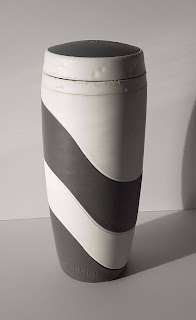Back in 2015, the Arts University Bournemouth held an
international conference, Provocative plastics:
design in plastics from the practical to the philosophical, attended by
scholars, art and design practitioners, and members of the plastics industry
from five countries. We are pleased to announce that the book of the conference
has now been published: https://www.palgrave.com/gb/book/9783030558819.
Its scope is more focused than the conference but on the area that elicited the most interest, plastic’s value. It consists of two sections. The first explores the multivalent nature of plastics’ materiality and their impact on creativity through the professional practice of artists, designers and manufacturers as a medium for making. The second explores how they are valued in societal use, people’s attitudes to plastics and the different values that can be applied to them.
The book is unusual in the range of its tone arising from the variety of experience of its authors. Some have hands on knowledge of working with plastics. As a result, their perceptions stem from anecdotal experience that, nonetheless, because of their practical knowledge of working with plastics as a means of livelihood, contribute meaningful testimony to the wider picture of plastics’ value. Others have researched their subject from specific theoretical standpoints and provide more traditional academic arguments. Some themes are common across chapters. Indeed there is a synergy across the texts in the two sections but from different perspectives. It is the interdisciplinary approach that sets this compendium apart. It brings together a variety of voices to unpick values attached across time to this paradoxical materials group, as their unique properties lead them to play an ever more essential part in our lives whilst simultaneously their ubiquity creates an ever-greater problem that we must solve.
Professor Sir Christopher Frayling, Cultural Historian and
former Rector of the Royal College of Art and Chair of Arts Council England,
says: ‘Plastics have had a very bad press - from just about every point of
view: environmental, social, cultural, aesthetic, the lot. This book adopts a
series of fresh perspectives on this much-maligned material. It explores, on
the whole dispassionately, the use of plastics in fine art, industrial and
product design, fashion, popular culture, in craftsmanship and in industry. And
it asks the question ‘is it possible to have sustainable plastics?’
Provocative? Yes - and also both timely and important. For too long, the debate
about this product of chemistry and manufacturing has been characterised by
rhetoric and knee-jerks. It’s time to reflect.’
Susan Lambert
Chief Curator













